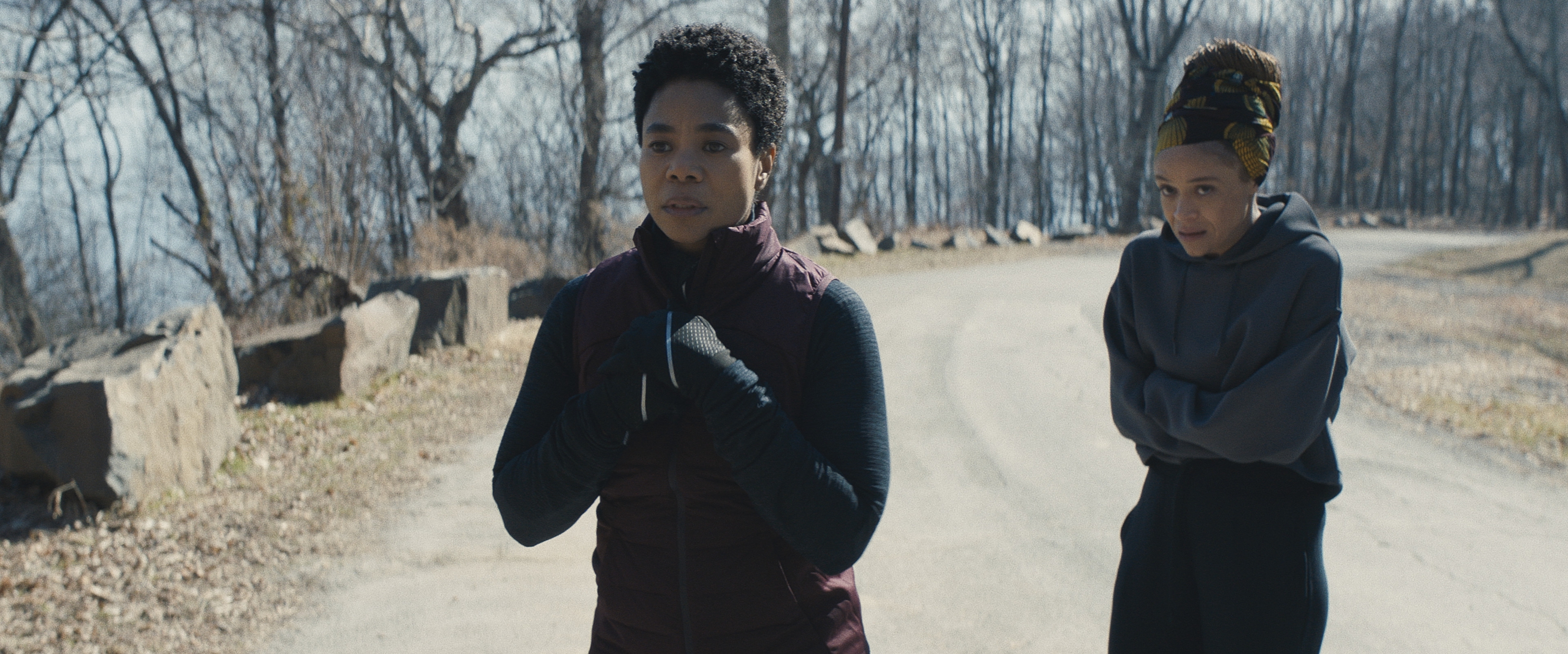
Sundance Standouts 2022
Observations on a selection of outstanding features that screened at the recent 2022 Sundance Film Festival (Jan. 20 - Jan. 30), recommended for their creative camerawork.
By Stephen Pizzello, Patricia Thomson, Andrew Fish and Terry McCarthy
Master
Cinematographer: Charlotte Hornsby
Director: Mariama Diallo
A stylish, cleverly envisioned horror story, Master is set at the fictional Ancaster College, an elite, bucolic New England school with Ivy League trappings that obscure the institution’s ugly history of race-based prejudice and suppression. The story contrasts the daily experiences of first-year student Jasmine (Zoe Renee) and a newly installed residential dean, or “Master,” Gail Bishop (Regina Hall), with the eerie after-dark occurrences that seem to plague the university — leaving the viewer to assess which of these paths is the more haunting and horrific. A third narrative strand shows how a literature professor (Amber Gray) suffers the faculty’s elitist, racially tinged scorn as she seeks a fully tenured position.

Director Mariama Diallo mines this terrain as skillfully as Jordan Peele did with Get Out, blending classic horror tropes with a compelling narrative that conveys the alienation and hostilities — both subtle and not-so-subtle — endured by its Black protagonists. The symbolic, spectral avatar of these indignities is Margaret Millet, a long-dead accused witch whose vengeful spirit haunts Belleville House, a dorm built where the gallows once stood — in particular, the very room Jasmine is assigned to occupy. According to campus legend, Margaret’s ghost has a reputation for driving students to suicide, and it’s not long before Jasmine feels this phantasm’s malign influence as she struggles to adjust to undergraduate life.
The double meaning of the film’s title clearly reflects the themes its makers intend to explore. Diallo, a graduate of Yale, says she first encountered the concept of a residential “Master” during her years at the school, where upper-class students casually disregarded the term’s racial implications. “It was very slickly normalized,” she says in press notes for the film. “They induct you into this crazy system where they just tell you, ‘We know it sounds weird to call somebody master, but it’s nothing to do with slavery.’ And I was able to accept that in a remarkably and disturbingly short amount of time. So, for my four years, it was just completely normal to have this person in your life who you would call Master so-and-so. They’re the person who you go to talk to if you’re having trouble in a class, or if you’re feeling homesick or anything like that.”
As the film’s characters suffer an accumulating onslaught of micro- and macroaggressions, cinematographer Charlotte Hornsby (who also shot Diallo’s award-winning 2018 short Hair Wolf) ratchets up the paranormal tension as well, immersing our heroines in dread-inducing ambience as they find themselves alone in various areas of the campus late at night — the near-empty library, a shower room, or menacing hallways, often lit in color schemes that signal the impending arrival of Margaret’s evil apparition — in particular, a crimson red that Hornsby used to convey “the vivid impression of nightmares.” Even the seemingly open expanse of the campus quad is imbued with a sinister quality that can fill a solitary walk with terror.
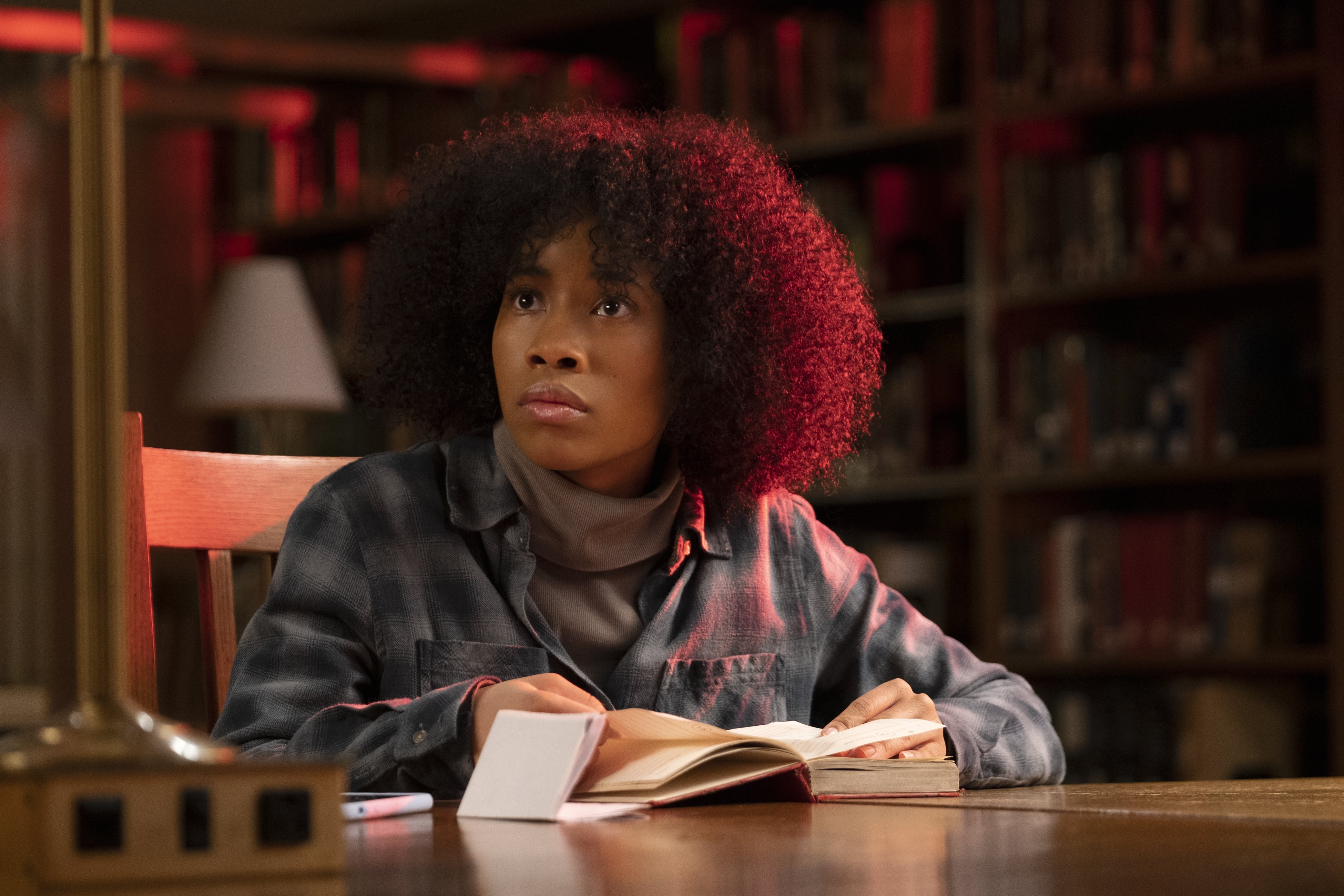
In describing her general approach to the film’s scenario, Hornsby has noted that her color palette also included golds, blues, muted greens and browns to emphasize the traditional, august atmosphere of Ancaster College, which is replete with oil paintings, antique furniture, and other reminders of its storied past. “One thing that my gaffer and I talked about was creating the feeling of Ancaster by night as if it is back in a lamp-lit colonial time, and having locations that are kind of benign by day be threatening in an especially puritanical way at night. And so we talked a lot about a brass-colored lamp light and trying to evoke a fire-lit, witch-burning, early New England feel at night.”
Citing a few of their stylistic influences, the filmmakers referenced Rosemary’s Baby and Let the Right One In for their voyeuristic camerawork, as well as The Shining in the way that film’s physical setting — the Overlook Hotel — imposes its menacing history upon the characters’ psychological vulnerabilities. They drew further inspiration from those features’ use of long, single takes with compelling camera movement, and Diallo has also mentioned the films of Michael Haneke, including Cache and The White Ribbon, for their “unrelenting and unflinching gaze at very difficult parts of the human experience.”
Fans of thought-provoking horror will surely appreciate Master as a film that offers an abundance of cinematic style, richly layered subtext, and genuinely terrifying moments that emerge not only from supernatural occurrences, but from everyday encounters in broad daylight. — Stephen Pizzello

All That Breathes
Cinematographer: Ben Bernhard
Director: Shaunak Sen
Delhi has the highest density of a raptors in the world. Mix that with smog 12 times worse than Beijing, and that adds up to hundreds of these birds regularly dropping from the sky. They collide with buildings, get entangled in wires, or develop blindness and neural deformities from the toxic air.
“When you grow up in Delhi, you have the sense of living in this dystopia postcard, with the grey monotone skies that are constantly laminating the city,” Shaunak Sen, director of the World Cinema Grand Jury documentary prizewinner All That Breathes, said in an online interview. “I was interested in doing something on this triangulation of birds, polluted skies, and human beings who reflect on these dyads differently.”
He found those humans in Nadeem Shehzad and Mohammad Saud, two Muslim brothers who run a bird rescue operation from a dingy basement alongside metal-cutting machines for their soap dispenser business. The brothers got their love of creatures great and small from their mother, who regaled them with stories of animal spirits. She used to tell them, “One shouldn’t differentiate between all that breathes.”
The director recruited the Berlin-based cinematographer Ben Bernhard to create a filmic style that follows his mother’s advice, placing animals and mankind on a level playing field. Sen said, “I wanted to shuttle between the lives of the brothers and simultaneously gesture towards something bigger, by which I mean human and nonhuman life in the city.”
We see one filming technique in a four-minute shot that opens the documentary, featuring some of Delhi’s nonhuman inhabitants. It’s night and the camera pans across a vacant lot littered with garbage. We slowly realize we’re surrounded by rats. The camera drops to their level, and we watch them bustle about with mysterious intention. Elsewhere the film uses similar unhurried, uncut pans to record horses and wild boar beside a city river, a frog with bokeh headlights behind him, and a centipede emerging from a puddle that reflects an airplane passing overhead. All show that imperfect balance between human and nonhuman life.
“The initial aspiration was to do something that makes us think about the city, about evolutionary changes, about ecology, pollution — all of that through a poetic, analytical lens while being anchored in the emotional life of the brothers,” Sen explained.
Seeking a poetic style, he turned to Bernhard, best known for his work with Victor Kossakovsky (Aquarela, Varicella). Bernhard shot with a Canon EOS C500 Mark II and Panasonic Lumix S1H, mostly coupled with Leica R primes or an Angenieux 45–90mm f/2.8 zoom. That gave him the flexibility to shoot everything from handheld to a 1000mm tripod setup.
Black Kites play a central role. The brothers’ rescue work started with one injured bird, which the local animal hospital refused to treat because he was a meat eater, which is against the Buddhist religion — a prejudice that extends to India’s Muslim minority population as a whole. To date, the brothers have saved more than 20,000 Black Kites over the last 20 years. But they can’t repair the sectarian violence that has risen in recent years, which the film also charts.
It’s fitting that the raptors under the brothers’ care are photographed so beautifully. Filming inside a giant bird cage, Bernhard used HMI lamps and mirrors to create a dramatic chiaroscuro effect. Panning across these mighty creatures, you get a sense of their individuality, dignity, and fragile vulnerability in this crowded, toxic ecosystem. — Patricia Thomson
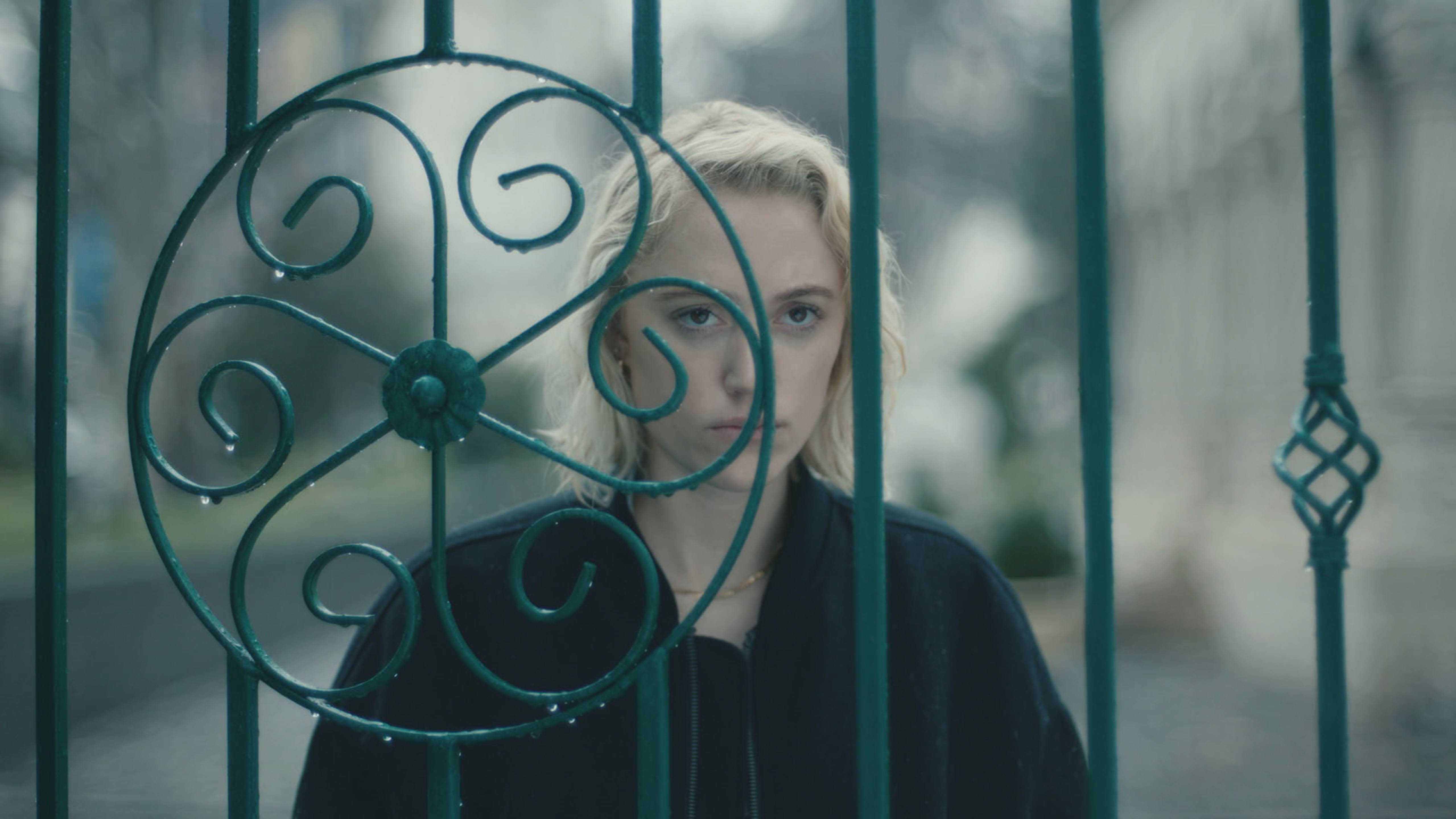
Watcher
Cinematographer: Benjamin Kirk, DFF
Director: Chloe Okuno
An impressive feature debut, director Chloe Okuno’s Watcher is a taut psychological thriller that touches on the vulnerability of modern women and gaslighting. “I wanted to capture a kind of constant, uncomfortable dread that accompanies many women throughout their lives,” she said in a director’s statement. Okuno accomplishes this with an economy of means, where someone standing motionless at a window or an empty subway car can send chills up your spine. For this first feature, the director reteamed with Danish cinematographer Benjamin Kirk, DFF — a fellow AFI Conservatory alum who shot their thesis film, the award-winning short Slut.
That sense of dread builds slowly. Julia and Francis are a couple who move to Bucharest when the American-Romanian husband gets transferred for work. Left alone for long hours, the former actress kills time roaming the city or in their expansive apartment. She starts to notice a man in the neighboring building who seems to be watching her from his window. She notices him again in a cinema, then again in the grocery store. From there the story builds, the audience fully inhabiting Julia’s increasingly alarmed state of mind and her sense of isolation as husband and police brush away her concerns. Upping the ante is a serial killer who’s on the loose, targeting young women like herself.
In the online interview, the director described how they built a visual language to make the world around Julia increasingly frightening, oppressive, and claustrophobic. “We tried to shoot her on a longer focal length in the beginning and then move towards wider lenses, so it seems like the camera is physically getting closer as the Watcher gets closer,” she says. “We played with centering her a bit more. Everything feels like he as a presence is focusing in on her.”
At first, the framing of the Watcher himself replicates Julia’s stolen, fearful glances — especially effective in the cinema and grocery store scenes, where she knows she’s being followed by a glimpse at his shoes. Until the midway point, we see him only in silhouette, partially framed, or on low-resolution surveillance footage, keeping him ambiguous.
David Fincher and Roman Polanski were influences, and looming above them all was Hitchcock’s Rear Window. “[That’s] built into the DNA of this movie,” Okuno said. “Every filmmaker I was referencing was also referencing Rear Window.”
Aiming for heightened realism, the cinematographer shot on an Arri Alexa Mini LF, choosing the large format camera for its narrow depth of field, which helped isolate Julia from the background. Kirk used Vantage One4 spherical lenses for their vintage look and modern engineering. Their capacity for close focus helped him intimately connect viewers with Julia. Glimmer Glass filtration completed the look.
“Men’s experience is different,” the director observed. “Everyday little exchanges where you’re patronized or people doubt your credibility or think you’re overreacting, you get that over and over and over again.” She’s experienced that as a director as well. “It’s a weirdly personal film.” — Patricia Thomson
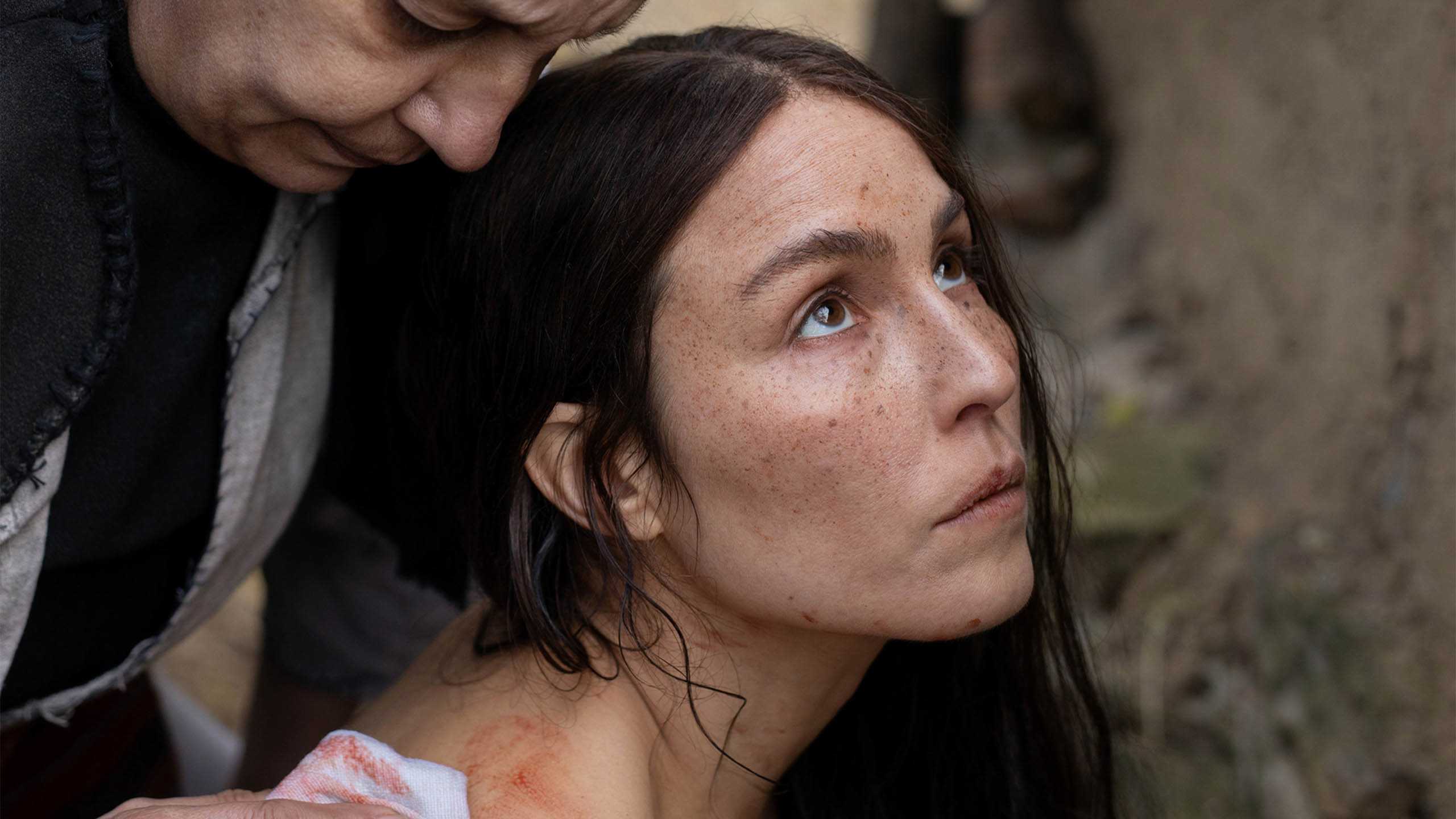
You Won’t Be Alone
Cinematographer: Matthew Chuang, ACS
Director: Goran Stolesvski
Surely the most unclassifiable dramatic feature at Sundance this year was You Won’t Be Alone. Written and directed by Goran Stolesvski, it’s best described as a Macedonian witch tale meets Virginia Woolf meets Terrence Malick, with the miracle of life as its central theme.
The story starts with a shapeshifting centuries-old witch who attempts to abduct a baby to raise as her own. But the mother offers a bargain: Leave Nevena alone until age 16 and then she can have her. The mother hides the child in a sacred grotto, thinking that will protect her. The witch makes off with her anyway and transforms Nevena into one of her own kind. But the witch loses interest and abandons the girl in the woods, where she discovers all the sights and sounds she’d missed during her years in captivity. After accidentally killing a woman, Nevena assumes her shape and takes her place in the village. That’s the start of a series of bodily transformations, which include a man, a girl who grows into a mother, and even a dog.
Stolesvski, an Australian-Macedonian director making his feature debut, explained in the online Q&A that he’d been interested in working in a horror space, which led him to witches. That established, it became a relationship drama. The witch is given full dimension with moments of tenderness, jealousy, loss, and loneliness and Nevena is granted the complete range of human experience as she passes through various bodies.
“In Eastern Europe, women were routinely accused of witchcraft or having taken the shape of another human being or animal,” Stolesvski said. “I thought, if you could do that, what a wonderful perspective on life.”
Rendered mute by the witch, Nevena expresses her thoughts in a broken-grammar voiceover that a wild child might invent. “The starting point for me was Virginia Woolf,” Stolesvski said. “I set out to capture cinematically the stream of consciousness she did with words. In thinking about that from a cinematic perspective, the first reference was Terrence Malick, who I adore.”
Working with natural light whenever possible, director of photography Matthew Chuang, ACS created a convincing 19th century world in an abandoned village in Serbia. To serve Stolesvski’s organic, improvisational directing style, Chuang shot with a handheld Arri Alexa Mini with rehoused Cooke Speed Panchros, aiming for a poetic documentary feel with the actors and ready to capture any magical moments of light and nature. A Red Komodo (6K) was used for VFX plates and the occasional stunt work, plus on location during preproduction.
“Our actors were given the freedom to discover moments, so instinctually the handheld Mini with the painterly quality of the older Cookes felt right,” Chuang told AC. “We never set marks for actors or camera. It placed a lot of pressure on the entire crew to adapt and to be incredibly focused, but they could feel we were onto something tangible.”
Chuang continues, “The complexity of natural light was embraced and I would ‘light’ by the way the handheld camera moved with the actors. Any lighting we did do was hidden within the space. To us it felt more intimate, sensory, and humanistic.”
Summing up the film, the director says, “Essentially there’s the perspective of this girl who’s seeing the world for the first time. I wanted to give the viewer that experience.” The film ultimately becomes a transcendent tale of identity, transformation, and the struggle to belong. — Patricia Thomson

Emergency
Cinematographer: Michael Dallatorre
Director: Carey Williams
Kunle (Donald Elise Watkins) is a model student bound for Princeton grad school, while his best friend, Sean (RJ Cyler), is less clear about his future. The one thing the pair of college seniors are both committed to — though perhaps Sean a bit more than Kunle — is becoming the first Black students to do the “Legendary Tour” of all seven invitation-only pre-spring-break campus parties. Their plan hits two snags in quick succession. Kunle realizes he’s forgotten to lock the rickety door of the fridge that stores his thesis-project mold samples on which his Princeton placement relies — and a brief stop at their apartment turns into a critical decision when they find an unconscious white girl (Maddie Nichols) on the floor of their living room. Kunle, Sean and their endearing pothead housemate, Carlos (Sebastian Chacon), conclude that as three people of color, it would be safer for them to bring the drunken young woman to the help she needs rather than call the police.
Photographed by Michael Dallatorre and directed by Carey Williams, Emergency is based on Williams’ short film of the same name — shot by Jomo Fray — which won a Special Jury Prize at Sundance 2018. This full-length version of the buddy comedy-adventure that’s steeped in weighty themes of race and hard choices had its premiere as an entry in Sundance 2022’s U.S. Dramatic Competition and earned KD Davila the category’s Waldo Salt Screenwriting Award.
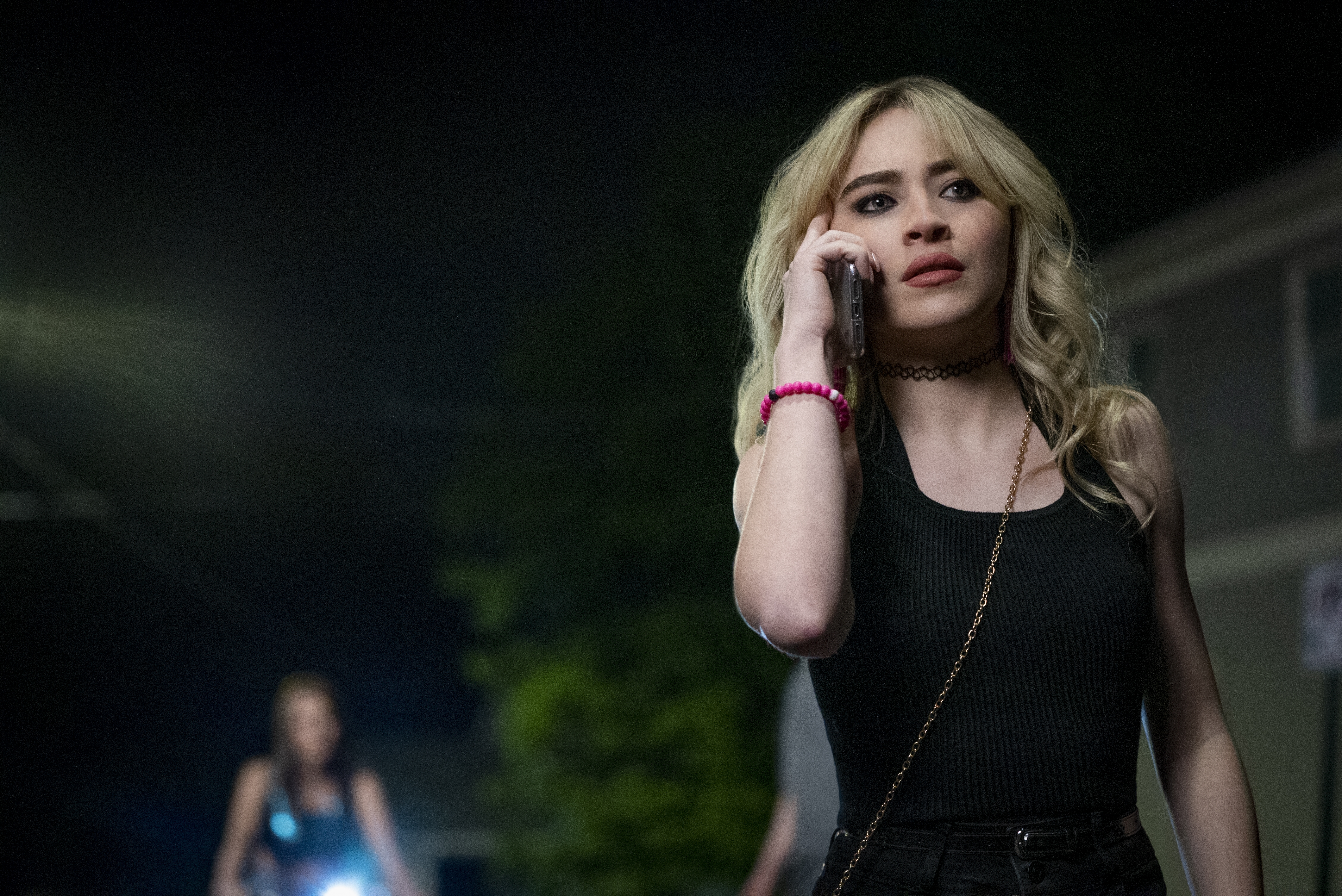
Dallatorre, who was named an AC Rising Star of Cinematography in 2020, helps introduce the two lead characters as they exit their class — while debating sensitive issues of bigotry and language — with a low-angle hero two-shot that lets the audience know who will be center stage and facing down major complications over the course of the long night ahead.
The majority of the film takes place in the evening hours, and Dallatorre makes great use of dark settings. Sean and Kunle start off fantasizing about the upcoming night, with images of party scenarios — a neon-lit soiree; a smoky, entirely green cannabis-themed blowout; the “Equinox” party where Sean’s ex, Asa (Summer Madison), is bathed in orange light. All with smooth, flowing camera movement that captures the pals at play.
With so much of the narrative ultimately taking place in a car, however — and Kunle, Sean, Carlos and the inebriated girl (whom we learn is named Emma) all in the vehicle together a good deal of the time — the film benefits from Dallatorre’s aptitude with small spaces and low light. Danger, humor, character revelations are all captured with a sense of having just enough room and light to tell the story — a comfort that gives extra punch to the tense, well-placed close-ups.
A particular skill of these filmmakers is their use of striking techniques in select spots to break away from the familiar. The stark, single light of a bicycle signals the approach of Emma’s sister (Sabrina Carpenter) and an oncoming conflict, while Kunle and Sean’s undertaking — and verbal showdown — in the nighttime woods sees minimal, restrained camera movement, save for a dramatic follow shot. Occasional overhead angles punctuate the story, foreshadowing the film’s life-or-death car chase that ends with a rise from the ground to a bird’s-eye view of a situation that’s been churned up by unfortunate circumstances and a drive to do right. — Andrew Fish
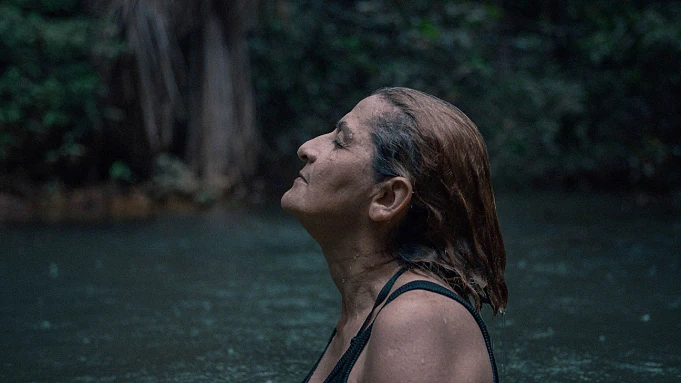
The Territory
Cinematographers: Alex Pritz & Tangãi Uru-eu-wau-wau
Director: Alex Pritz
At the beginning of The Territory there is a series of time lapse satellite imagery showing aerials of green rainforest in Brazil shrinking as roads and deforested brown areas spread inexorably across the region. Then the camera of director and cinematographer Alex Pritz focuses in on a column of leaf-cutter ants moving across the forest floor, interspersed with shots of a group of indigenous children laughing as they run towards a river to go swimming. Pritz, who also shot the documentaries When Lambs Become Lions and Matthew Heineman’s recent documentary on covid, The First Wave, signals early on that The Territory will be jumping across different perspectives as it tells the story of the small Uru-eu-wau-wau tribe whose native rainforest is being encroached upon by slash and burn farmers.
Isolated until 1981 when Brazilian anthropologists first “contacted” the tribe, the Uru-eu-wau-wau’s population has shrunk from 2,000 to about 200 today, mostly due to diseases brought to them by outsiders. To portray multiple perspectives, Pritz interviews the encroaching farmers and loggers as well as the tribal members, and also gives cameras to the tribe to shoot their own footage, which he incorporates into the film. At the height of the pandemic, he arranged for sanitized camera kits to be dropped outside villages to avoid the risk of covid transmission.
“We approached this as a collaborative project from the beginning,” says Pritz. “One of the things missing from photography is the views of indigenous people. Viewing things through their lens shows what they want to see, which might not be the butterfly on a leaf, but the [illegal logging] invaders of their land.”
The Ure-eu-wau-wau come from an oral culture, but they are quickly learning to adapt to the audio-visual culture that Pritz and others have exposed them to. Documenting the “invasions” by the loggers and sharing the footage with the Brazilian media is helping their cause according to Bitate, the youthful leader of the tribe.
“Photography is helping me as a leader,” says Bitate. “I’m finding my voice, both for evidence, and to express myself… We have our own way of seeing things.” The Territory artfully shows how different the world can look, depending on who is doing the seeing. — Terry McCarthy
You'll find more of our Sundance 2022 coverage here and here, and a rundown of the festival’s awards here.






